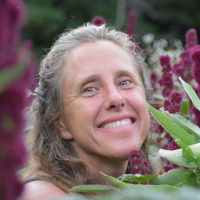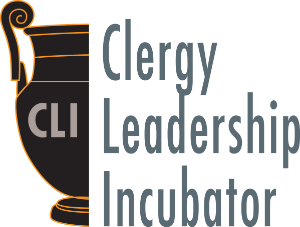Rethinking ‘spiritual’ communities — a Jewish eco-village
The Living Tree Alliance (LTA) is a Jewish cohousing village in central Vermont that weaves together a  residential community with a working homestead and a nonprofit educational center. The idea took shape in 1997 when, on our second date, my future husband Craig and I realized that we shared a dream of living in an intentional community, intimately connected to ecology and spirituality.
residential community with a working homestead and a nonprofit educational center. The idea took shape in 1997 when, on our second date, my future husband Craig and I realized that we shared a dream of living in an intentional community, intimately connected to ecology and spirituality.
For the next 10 years, Craig and I nourished our vision for LTA, developing practical skills while following our hearts. After apprenticing on an organic CSA with an affordable housing initiative on the West Coast, we made our way back to the Northeast to be closer to family. We were fortunate to meet the Davises, an experienced farming couple with three beautiful children, who were starting a biodynamic, horse-powered community land trust in the hills of New Hampshire. Craig and I worked with the Davises for several years and we learned the full spectrum of homesteading skills, within the context of intentional community life.
After a bout with internal community social upheaval, followed by the mortgage crisis of 2008, the fabric of the community that the Davises had built was unraveling. It became evident that in order to build a Jewish intentional community we needed to take some practical steps towards making it happen ourselves.
The initial focus of LTA was not only establishing a clear mission and vision, but also articulating a process for nonviolent communication and conflict resolution. Rather than focusing on money and land as the initial priorities, we focused on building a network of people that understood and celebrated the community relationship components of the vision. Over the next two years we formed a visioning committee that met for Shabbatonim and numerous phone conversations. Many of the people who were on this committee became LTA co-founders, residents in the cohousing village and/or served on the nonprofit board we created.
With a core group well established by 2013, we began searching for land. We wanted high quality farmland, a healthy forest with walking trails, space to build seven to nine homes in a small footprint, near a Jewish community in a Vermont ski town. Craig’s professional skills as an eco-village design and development consultant made him ideally suited to convene meetings with the core group, meet compliance standards with town regulations, secure financing, cultivate donors and design the residential village.
Even before we settled on a location, we set up a nonprofit to develop earth-based Jewish holiday programs connected to the seasons. Like the strands of a challah, LTA now has three parts that inform the whole: an educational center for both Jewish and secular environmental education, a working homestead and a residential village. LTA officially began stewardship of the land it calls home in summer 2015 and began cultivating it for production in 2017.
Currently the residential community — which is currently permitted for a maximum of seven household units — consists of three residential eco-friendly homes, a common house and a rustic cabin. Seven adults, four children and two young adults currently live in the eco-village, and an elder family will be building a house to move into in the spring; this summer, an additional family with young children, and several apprentices will join the community. The village design is compact, accessible and ecologically oriented, balancing the dynamics of community engagement with the needs for personal space. Our residential culture is oriented towards the observance of Jewish traditions, rituals and cycles while maintaining a spiritually inclusive consciousness.
The farmland had been cut for hay for many years, but in 2017 we implemented regenerative agriculture practices. Currently, there is a six-acre field hidden away from the road, nestled between forest walks, farm animals grazing on pasture, perennial and annual beds that are helping to draw down the carbon while soothing the spirit of all those that visit. This field at LTA has become a hub of gathering that continues to nurture blossoming relationships, learning opportunities, connection to organic farm fresh food and ancient modalities with renewed traditions.
The enrichment and educational programs create opportunities for learning, insight, healing and inspiration and have impact across age, gender, racial and spiritual spectra. We host community-wide events such as Sukkot on the Farm, Shavuot on the Mountain and Sugar and Schmooze (during maple sugaring season); these community enrichment programs and school field trips, designed in collaboration with local schools and other community groups, connect people to each other, to the community, to the earth and to the Jewish tradition. Programs are designed in collaboration with local schools and other community groups.
We have faced some challenges: insufficient funding; a divorce in one of the original families; personal conflict; and the effort it takes to build something from scratch with limited resources. The initial conflict resolution policy created has been very helpful throughout the endeavor. Continuing to commit and practice nonviolent communication has supported members in being accountable to this ideal. Making sure we balance time for fun and logistical meetings makes residential living more enjoyable. The pandemic seems to have revealed to many of us the benefits of living connected to one another. It takes time and commitment to work out differences. However, LTA members believe that we are creating an antidote to America’s epidemic of isolation while revitalizing Jewish culture and living in harmony with the land.
Our residential community is growing at a healthy pace. Five of our seven lots have been allocated and we continue to look for young families that want to live connected to the earth and the cycles of the Jewish calendar in relationship with a vibrant, post-denominational community. The plan is to have all the house-sites built and lived in by active community residential members. Around the houses are edible gardens and fruit trees, and safe space for children to run freely between houses. We believe that we are filling an important niche in the world and are excited to see our dream continue to unfold.
Find out more at livingtreealliance.com.
[themify_hr color=”light-gray” width=”100%”]
Kohenet Sephirah Stacey Oshkello co-founded Living Tree Alliance, a Jewish cohousing community in central Vermont woven together with a working homestead and farm educational program. Oshkello organizes community events and wellness programs that integrate seasonal homesteading practices with the Hebrew calendar, the ancient Jewish wisdom tradition and optimal wellness. She is nourished by being connected to healthy food, cooking, growing food, living amongst community, celebrating the cycles of the Jewish calendar, walking in the woods, teaching and soaking in hot baths. As the executive director of Living Tree Alliance, Oshkello is committed to building Living Tree Alliance as a place that is redefining community, regenerating land and revitalizing culture.
